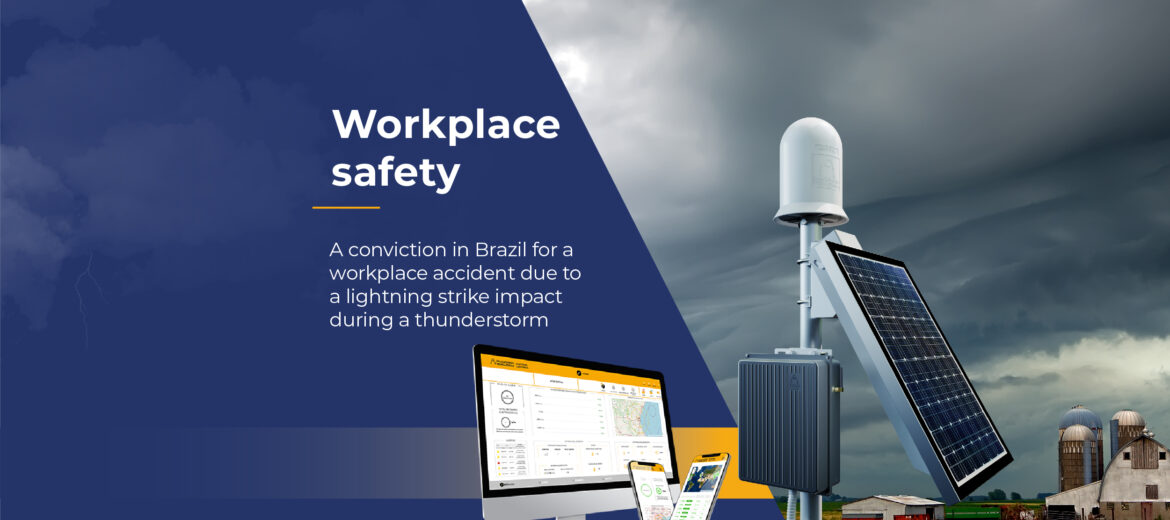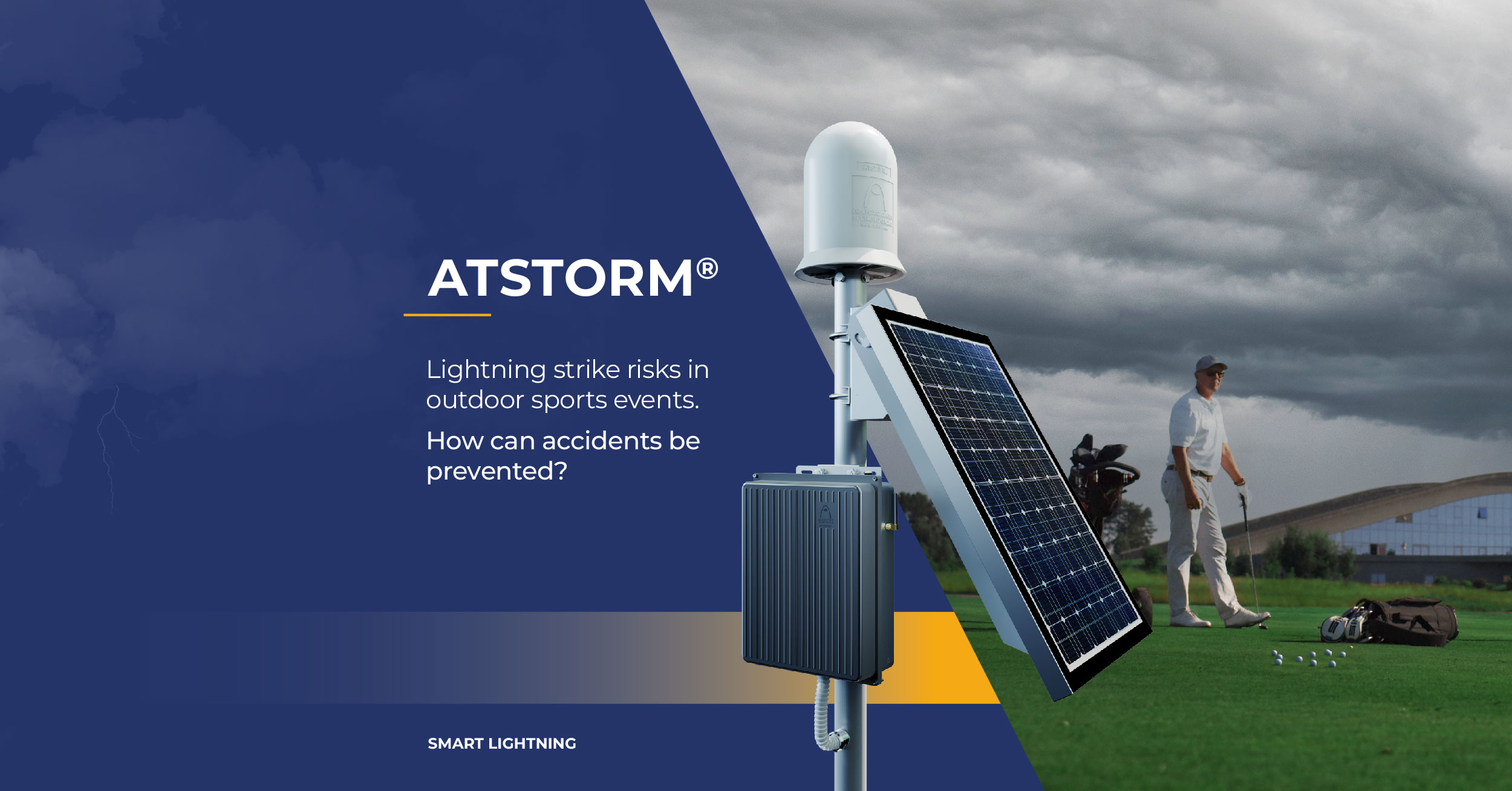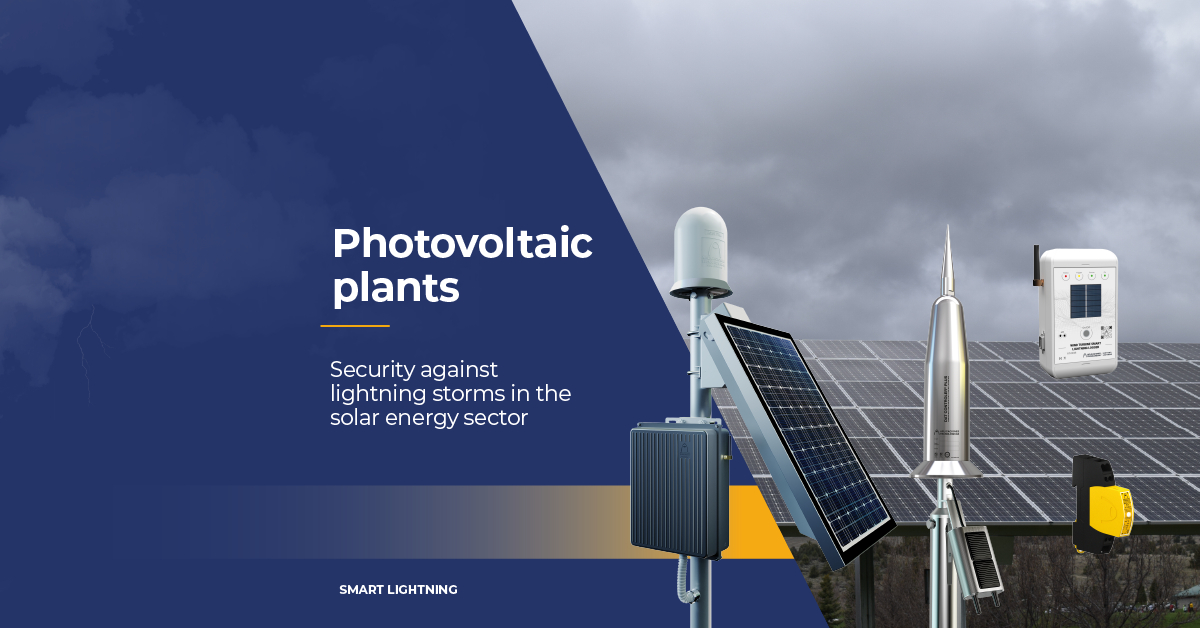A recent judgment in Brazil has created case law on the liability of farm owners for the death by lightning impact of a worker in 2019, by ordering him to continue work in the field during a thunderstorm. Subjective decision-making, based on criteria of the probability of the impact of a lightning strike or on traditional methods puts people’s lives at risk. On the contrary, as stated in the Brazilian standard ABNT NBR 16785 on thunderstorm detection, some systems make it possible to objectify the decision and save workers and assets from the imminent risk of a lightning strike.
In Brazil, the Superior Labour Court (TST) of Brazil has recently condemned the owners of a rural farm for the death of a worker last January 2019, considering that the accident was not a fortuitous event and that there was negligence in maintaining the work in the field during a storm.
The accident occurred on the cowboy’s first day of work in January 2019. It was around two o’clock in the afternoon, and he and the farm foreman were going to help another worker separate the cattle. The two were on their way to the corral when it started to rain. Despite warnings from the workers, suggesting that they seek shelter in a nearby storehouse, the foreman ordered them to continue the work. Moments later, the cowboy, who was riding a horse, was struck by lightning, killing him and the animal instantly.
The TST’s decision precedes the one taken by the Labour Court of Mato Grosso, which condemned the owners of the farm in the first instance, despite the main allegation that it was a fortuitous event, a situation in which it was not possible to predict or adopt occupational safety measures to prevent a lightning strike.
The judgment, however, says that he should have stopped the work in the face of the obvious risk, based solely on the fact that the stormy condition made the working environment clearly dangerous and that the possibility of lightning strikes in the vicinity was foreseeable.
Safety from lightning storms – Objective decision-making for the balance between occupational safety and operational efficiency
Every year, thousands of deaths and injuries are caused by lightning strikes around the world. Despite these figures, the number is being reduced every year thanks to prevention and protection systems. In areas of economic activity, especially where outdoor work is carried out or flammable materials are handled, occupational safety and operational efficiency must go side by side with reliable lightning protection systems (LPS).
When facing the risk of a thunderstorm, premature shutdowns are economically damaging while, if a shutdown is carried out too late, human lives may be at risk. Similarly, returning to normal activity too early, considering the storm has already passed, exposes personnel again, while excessive downtime entails economic costs.
There are two main categories of thunderstorm detectors today: those based on electromagnetic field measurement, assessing the electromagnetic radiation generated by lightning, and those based on electrostatic field measurement. The difference in the anticipation time provided by these two types of detectors has significant implications for considering the implementation of preventive measures since some are based on the distance of previous lightning strikes (electromagnetic field detectors) and others on the variation of the atmospheric electrostatic field (electrostatic field sensors).
In order to minimise unnecessary downtime and thus reduce the cost of downtime while avoiding personal injury, the Brazilian standard ABNT NBR 16785 states that reliable storm detection systems warn of both the approach and the formation of storms over the target. Thus, the decision to stop work in the open air is made according to objective criteria: the measurement of the electromagnetic field (approach) and, above all, of the electrostatic field (formation). According to the Brazilian standard and the international standard IEC 62793:2020 “Lightning protection – Storm warning system”, the electrostatic field is the only reliable indicator of risk, as it detects all phases of a storm.
Workplace safety and thunderstorm Risk Anticipation – The ATSTORM® System
The ATSTORM® system, developed and patented by Aplicaciones Tecnológicas S.A., is a local warning system designed to prevent the risks associated with electrical storms. ATSTORM® issues alerts based on the electrostatic field measurement, and also has an electromagnetic sensor that extends its monitoring area, allowing the definition of a pre-alert status. This system collects real-time information from the detection units and transmits it to AT-CLOUD via Internet of Things (IoT) technology. Using specialised algorithms, ATSTORM® estimates the thunderstorm risk at the site, identifying conditions that require an alert to be issued.
The transfer of data to a centralised server makes it possible to adapt the alarm algorithms to improve their effectiveness, correlate data with other sources to optimise the system, adjust algorithms to possible changes at the site, and monitor the status of equipment for predictive maintenance.
If you want to learn more about how ATSTORM® works, you can contact us via this link and download the free Advanced Lightning Risk Management ebook.
You can also attend any of our webinars on thunderstorm safety at the following link.



